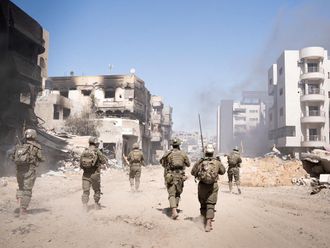Most of us are aware of what the media is and how it operates due to our daily exposure to newspapers, magazines, radios or televisions. Media, however, comes in many forms and its content can vary. A particular form of media needed by communities in advanced countries is one that specialises in the coverage of crises and disasters; a requirement in this day and age that is rife with issues.
The world today is intertwined because of globalisation, which often amplifies crises in various parts of the world. There are pessimistic analyses concerning the future coming out all the time. Add to this the current state of the environment and the severe damage it’s being subjected to and you have a very worrying picture.
Against this backdrop, humans are faced with a series of neverending crises and disasters, resulting in people suffering from a constant state of depression and frustration.
Natural disasters can be caused by a flaw in the laws of nature or physics, while many crises experienced in the world today are man-made. Crises are not limited to wars and economies. Therefore, it is in no way an exaggeration to name this current historical period we live in as “the phase of crises and disasters”.
It is during this period that we need a media that specialises in the coverage of crises and disasters, something we currently do not possess.
Crises and disasters harm communities, the achievements of peoples and nations and their institutions. Once they occur, the public and private sector operations come to a screeching halt, which in turn can affect the development processes and impede progress for a very long time. This, of course, depends on the magnitude of the crisis or disaster and its destructive power. However, just like in the laws of physics, every negative ‘destructive’ force has a positive ‘constructive’ force, and the positive force can be more powerful than the negative. A constructive force is the power of a nation and its institutions, as well as the awareness of its community.
If a country is strong, it becomes more capable of overcoming crises and disasters. This also results in a shorter recovery period.
Crises and disasters usually involve three phases. The first phase takes place prior to the event, and includes carrying out preparations and raising public awareness. The second phase is during the disaster or crisis, and consists of surveying and dealing with the damage. The third is the recovery phase.
The third phase is no less difficult than the second, and is far more important. The aftermath of a disaster or crisis usually leads to the exhaustion of institutions due to the amount of hard work that needs to be done, the high number of casualties and missing persons, as well as the presence of medical bodies and volunteers from local and global organisations on the field. It is a terrible scenario that comes with great responsibility, and brings with it pain, sadness and empathy, as well as strength and determination to overcome hardships.
The most important national historic role that can be played by the media is reporting during these difficult times. So how does a country overcome crises or disasters?
This is a key national issue that requires thorough coordination and cooperation between all bodies in order to implement an urgent and flawless media plan for times of crisis and disaster. Journalists, during these times, play a role similar to that of seafarers who guide ships away from shallow waters.
That is why it is necessary to introduce crisis and disaster media training courses in public and private institutions around the world, during which a hypothetical pre-emptive plan can be implemented to simulate such events.
Crises can be economic, political or security-related, while natural disasters can be earthquakes, floods or ferocious fires. There are many examples of crises and disasters throughout history, such as the global economic crisis in 2008, the devastating tsunami in Thailand in 2004, the Nasa space shuttle Challenger disaster in 1986, as well as those concerning famine, desertification and drought.
The main objective of a media plan on a hypothetical crisis is to effectively raise awareness among all members of society. The plan would offer answers to the following questions: What was the cause of the crisis or disaster? What are the duties of members of the public when the crisis occurs? How can people help the country deal with the damage caused by a crisis or disaster?
The occurrence of any critical event is based on a number of factors, but such information won’t be necessary since this particular one is hypothetical. Therefore, the first step is to give this hypothetical crisis or disaster a name, location and scale. The second step is to put in place a media plan for crises that is based on three phases: Pre-crisis, during the crisis, and post-crisis (recovery).










